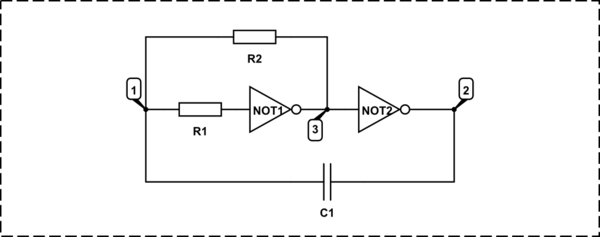I've assembled the following astable multivibrator (a.k.a. astable oscillator) circuit:

It generates a square wave (as expected), but the output frequency isn't predicted well by the formulae that I've come across for this circuit.
For example, this circuit appears in Figure 5.30 of The Art of Electronics and its frequency is said to be approximately \$\frac{1}{RC}\$ (presumably \$R\$ is meant to be \$R_2\$, although I suppose it could be the total resistance of \$R_1\$ and \$R_2\$ in parallel) when \$R_1\$ is approximately \$10R_2\$. The same circuit (albeit using NAND gates configured to act as inverters rather than actual NOT gates, not that this should affect the result) appears on this site under the heading "NAND Gate Astable Multivibrators", where its frequency is given as \$\frac{1}{2.2R_2C}\$. No derivation is offered in either case.
How might I go about deriving the output frequency myself? I assume some form of RC circuit analysis involving a differential equation would work, but given the indirect means by which the circuit is powered (namely, though the NOT gates) I'm unsure of how to set up an equation for capacitor voltage as a function of source voltage for this circuit (assuming this is the correct way to proceed).
Any suggestions would be appreciated!

